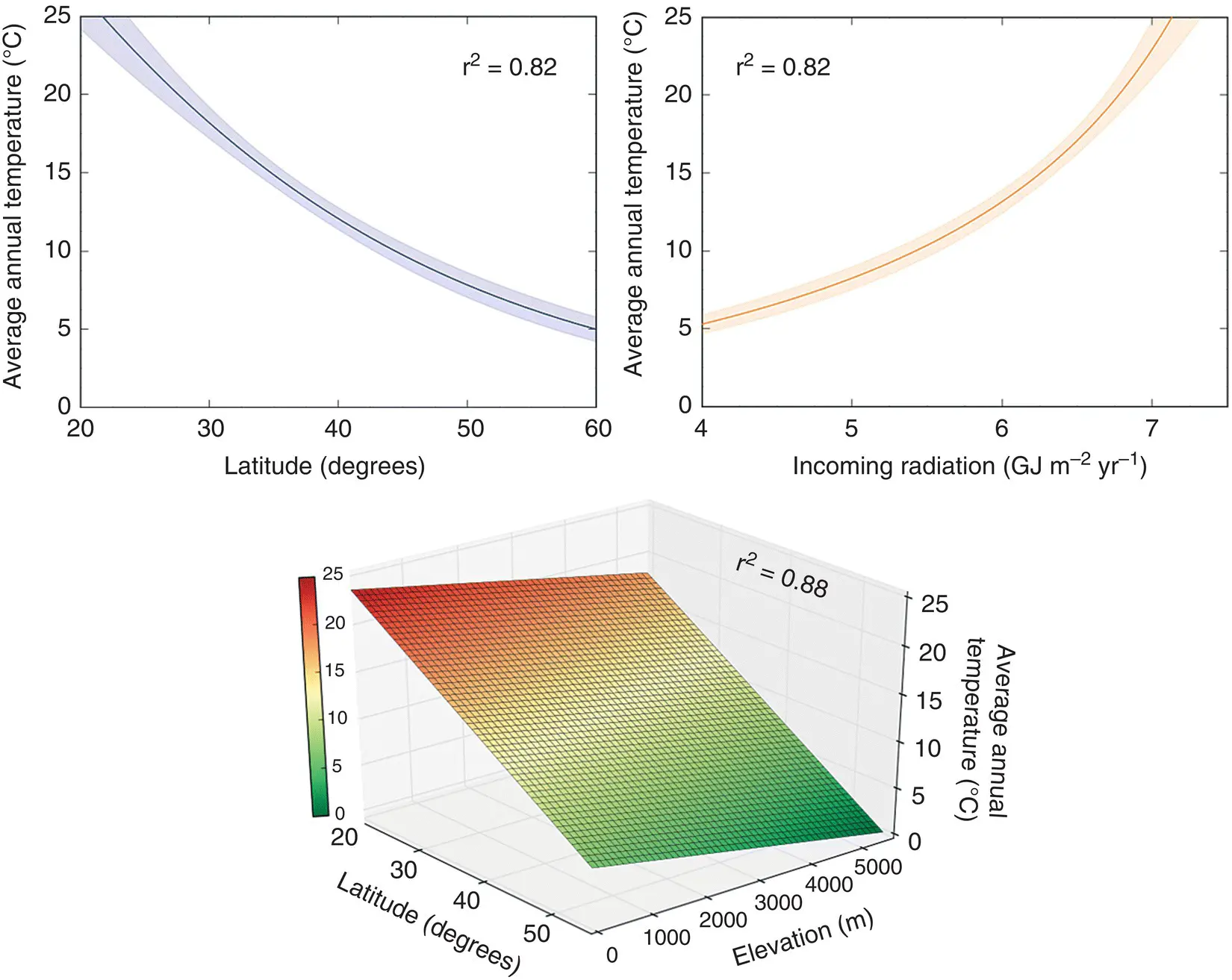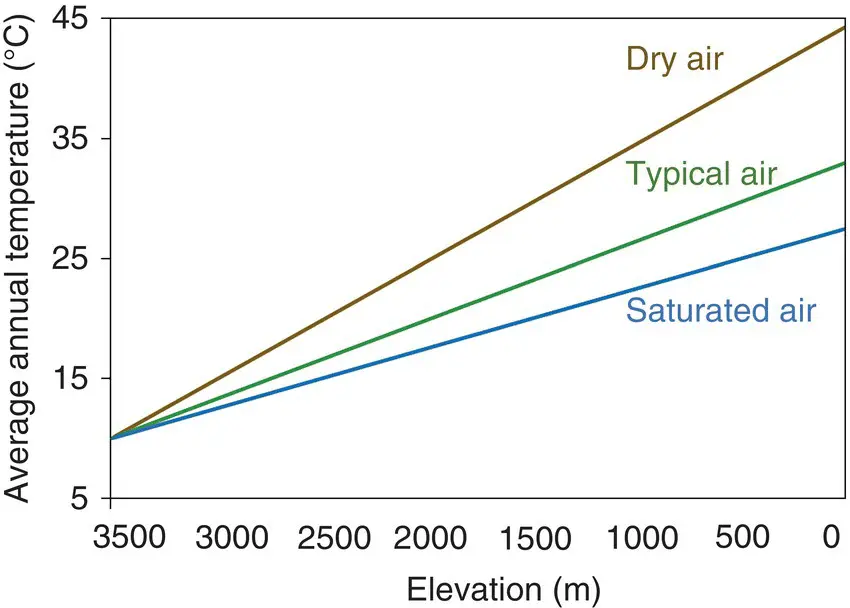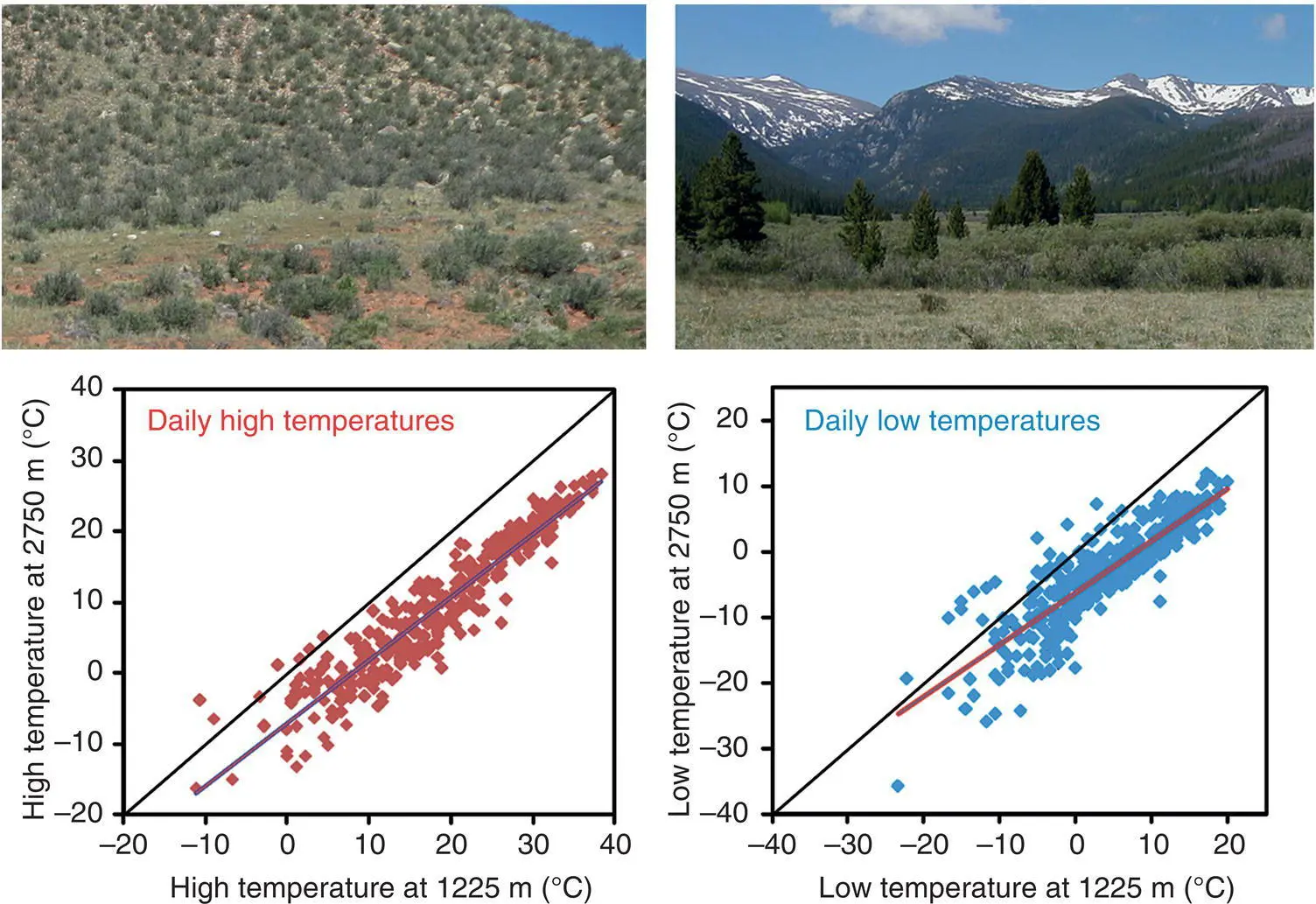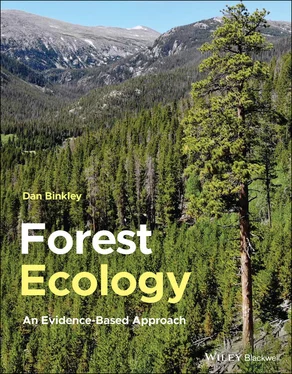Dan Binkley - Forest Ecology
Здесь есть возможность читать онлайн «Dan Binkley - Forest Ecology» — ознакомительный отрывок электронной книги совершенно бесплатно, а после прочтения отрывка купить полную версию. В некоторых случаях можно слушать аудио, скачать через торрент в формате fb2 и присутствует краткое содержание. Жанр: unrecognised, на английском языке. Описание произведения, (предисловие) а так же отзывы посетителей доступны на портале библиотеки ЛибКат.
- Название:Forest Ecology
- Автор:
- Жанр:
- Год:неизвестен
- ISBN:нет данных
- Рейтинг книги:5 / 5. Голосов: 1
-
Избранное:Добавить в избранное
- Отзывы:
-
Ваша оценка:
- 100
- 1
- 2
- 3
- 4
- 5
Forest Ecology: краткое содержание, описание и аннотация
Предлагаем к чтению аннотацию, описание, краткое содержание или предисловие (зависит от того, что написал сам автор книги «Forest Ecology»). Если вы не нашли необходимую информацию о книге — напишите в комментариях, мы постараемся отыскать её.
Forest Ecology
An Evidence-Based Approach Forest Ecology: An Evidence-Based Approach
Forest Ecology: An Evidence-Based Approach
Forest Ecology — читать онлайн ознакомительный отрывок
Ниже представлен текст книги, разбитый по страницам. Система сохранения места последней прочитанной страницы, позволяет с удобством читать онлайн бесплатно книгу «Forest Ecology», без необходимости каждый раз заново искать на чём Вы остановились. Поставьте закладку, и сможете в любой момент перейти на страницу, на которой закончили чтение.
Интервал:
Закладка:
Source:Based on Kittredge 1948, with data from the US Forest Service.
At this point, a technical detail about temperature and emission of radiation (and loss of energy) needs to be mentioned. From the description above, it sounds like there would be no net loss of energy by longwave radiation from a soil that had the same temperature as the air. The losses of energy from the soil to the air would match the energy emitted from the air to the soil. This would be true if the soil and air were perfect “black body” emitters of radiation. Most objects are more like “gray” bodies, emitting less energy than this ideal maximum. Soils and plants are almost‐black box emitters of radiation, emitting about 90% or more of the black‐body maximum. Air is a poorer emitter, especially if humidity is high, emitting only about 70% of the maximum. This means that a soil at 8 °C will emit more energy to the air than the air at 8 °C will emit back to soil, leading to greater cooling of the soil. This difference in emissivity can lead to quite large differences in temperatures at the soil surface compared to the air a few meters above the ground. The presence of trees can increase turbulence, preventing a layer of very cool air from establishing at the ground surface. In the absence of trees, the difference in emissivity between air and ground can chill a layer of air on windless nights by 10 °C relative to a few m above the ground ( Figure 2.11; Holtslag and de Bruin 1988), with dire consequences for seedlings. The presence of clouds or high humidity can prevent this severe cooling. The emissivity of water is very high, so the emission of energy from moist air toward the ground would be about the same as the ground's emission, when air and ground start at the same temperature.
Temperatures Decline with Increasing Latitude
The patterns of temperatures around the Earth include familiar trends of hot tropical conditions near the equator, and chilly boreal conditions to the far north and south. Empirical measurements of temperature of course support this general trend, and traveling northward for 550 km from a starting point of 35° latitude reduces the average annual temperature by 2.5 °C when 40° latitude is reached ( Figure 2.12). But why do temperatures follow this pattern? The air at any given latitude does not sense its location, so latitude is a covariate with temperature, not a direct driver. A more causal explanation can be plotted with temperature in response to the annual amount of incoming solar energy. The statistical fit for the data is the same, whether we use latitude or solar radiation on the X axis. This is because the amount of solar radiation relates strongly to latitude because of the geometry of a round planet with a tilted axis moving around the sun. The key difference between these two “explanations” of average temperatures is that one provides a good predictive answer, and the other provides both a predictive answer and a good explanation for why.
We can be very confident in the general trend of temperature in relation to latitude or incoming solar energy, as the 95% confidence intervals around the average trends are relatively tight. The actual temperatures for some locations fall substantially outside this confidence band, because the confidence band relates to the average trend, not to the dispersion of sites around the trend. What might explain why one site falls above the average trend, and another falls below? Temperatures also tend to be colder at higher elevations, and the third graph in Figure 2.12shows that adding information on elevation can improve the prediction of temperature compared to latitude alone. Other factors are important too, including distances from oceans (which tend to moderate temperatures) and mountains (which limit the ability of oceans to affect temperatures).

FIGURE 2.12 Average annual temperatures for sites around the world decline with increasing latitude (distance N or S from the Equator (top left). Latitude is a good predictor of temperature, but this is only a correlation not a process‐based explanation. The annual amount of incoming solar radiation (top right) provides a strong explanation, and has the benefit of relating directly to a process influencing temperature. The variation of individual sites around the general trend can explained in part by considering other factors, such as elevation (bottom).
Temperatures Increase at Lower Elevations
What we measure as temperature depends on the collisions of molecules, with temperatures rising as the number of collisions increase. The mass of air molecules in 1 m 3of air at 3000 m is about 0.8 kg, rising to 1.2 kg at sea level (about a 50% increase for a 3000 m loss of elevation; or in the other direction, a 33% decrease for a 3000 m gain in elevation). The increasing density of air means more collisions between molecules, which means a higher temperature. The temperature increase depends on the amount of moisture in the air, and a typical rate would be an increase in temperature of about 1 °C for each 100 m drop in elevation ( Figure 2.13). This pattern is referred to as adiabatic heating (or cooling), because the overall energy among the molecules doesn't change even though the temperature changes with air density (or pressure).

FIGURE 2.13 Air temperature increases with decreasing elevation because increasing air density leads to more frequent collisions among air molecules. This adiabatic (no change in energy content) heating depends in part on the moisture content of air, as evaporation or condensation of water moderates the trend that would occur in dry air.
The general relationship graphed in Figure 2.13can be examined for specific cases, and for details that cause some deviations from the central pattern. Figure 2.14compares daily high and low temperatures for a valley in the Rocky Mountains of Colorado, USA with corresponding temperatures in the foothills about 50 km away. Rising 1500 m in elevation lowered air pressure by 17%, reducing the summertime average daily highs by about 8 °C, and the average daily lows by 10 °C. The differences in daily lows were smaller in winter, only about 2–3 °C. During the warm season, the lower humidity of the air allowed for a stronger elevation effect than occurred during cool periods when condensation of water moderated temperature changes. Some days in winter were actually warmer at the higher elevation, illustrating the occasional importance of shifting weather systems and cold‐air inversions.

FIGURE 2.14 Daily comparisons of high and low temperatures at locations that differ by 1500 m in elevation showed a general pattern that also included specific days that were higher or lower than the trend. Some of the variation related to the moisture content of the air, especially on colder days, and other variation relates to cloudiness and shifting weather systems.
Source:Data from Steven Fassnacht.
Temperature Variation Over Time, and Across Space, Strongly Influences Forest Ecology
The complex physics of radiant energy and heat transfers come together to determine the temperatures that influence the development and success (or failure) of organisms. For example, the differences in incoming sunlight between N‐ and S‐facing aspects of a glacial valley in Colorado, USA resulted in an average difference in air temperature (2 m above the ground) of 1 °C, the equivalent difference associated with a 200‐km difference in latitude (on flat terrain). This difference was also large enough to affect the accumulation and retention of snow, which in turn influenced soil temperatures. Snow is a good insulator, and soils beneath deep snow may stay near 0 °C in winter, compared to lower temperatures in soils unprotected by snow. In December, a small amount of snow on the cooler N‐facing side of the valley kept soil temperatures a few degrees warmer than across the valley on the S‐facing slope ( Figure 2.15). In May, the greater accumulation and slower melting of snow on the cooler N‐facing side kept the soil near freezing while the soil on the S‐facing warmed with spring sunshine.
Читать дальшеИнтервал:
Закладка:
Похожие книги на «Forest Ecology»
Представляем Вашему вниманию похожие книги на «Forest Ecology» списком для выбора. Мы отобрали схожую по названию и смыслу литературу в надежде предоставить читателям больше вариантов отыскать новые, интересные, ещё непрочитанные произведения.
Обсуждение, отзывы о книге «Forest Ecology» и просто собственные мнения читателей. Оставьте ваши комментарии, напишите, что Вы думаете о произведении, его смысле или главных героях. Укажите что конкретно понравилось, а что нет, и почему Вы так считаете.












